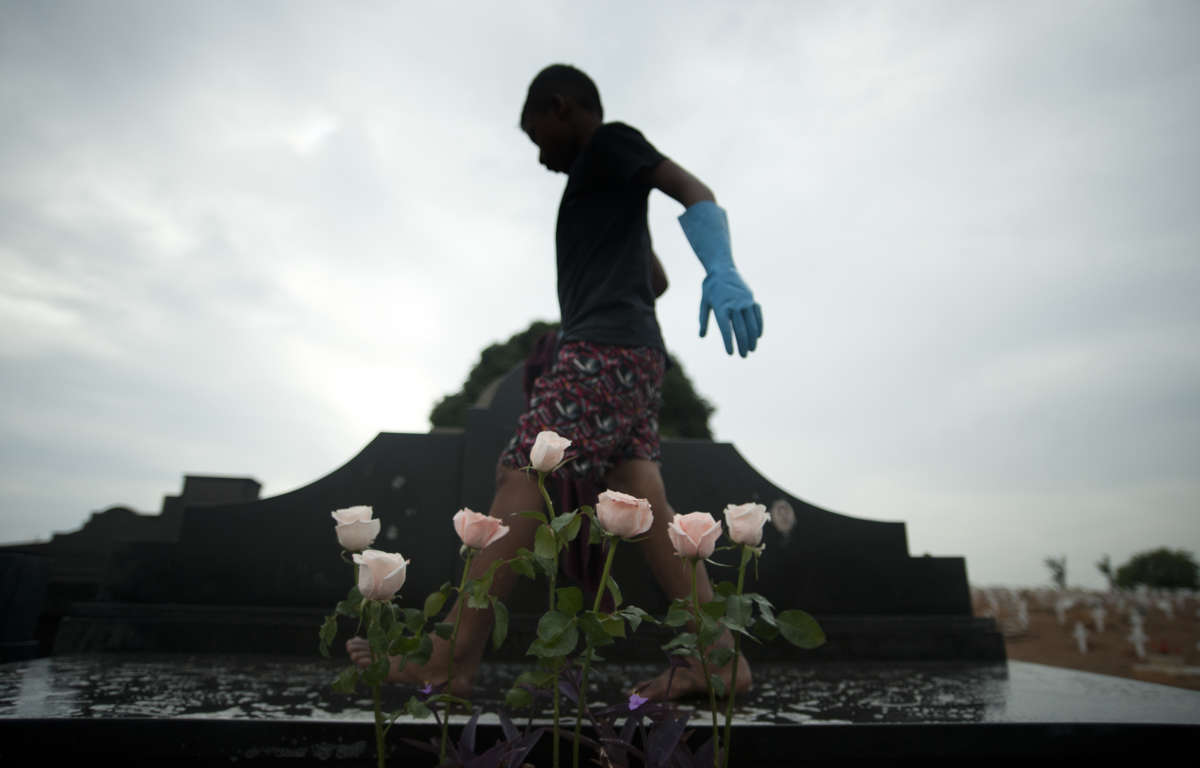In the midst of violent polarization in the political landscape of the United States, one fact many people can agree on is that monuments are a part of history. Tearing down white bronze casts of dead white men will not erase enslavement and war in the past. But it can be a step towards making room for the stories these men fought to erase — not only in the U.S., but every place that is home to the African diaspora. These invisibilized stories reveal the legacy behind the racialized oppression still seen across the world today. The Caju Cemetery in Rio de Janeiro, built over the bodies of enslaved Africans, is one of the largest in Brazil, and its 180-year history is symbolic of the relentless erasure of Black bodies and stories that persists today.
In Brazil, where the African diasporic population is higher than that of the U.S. (and is the largest in the world), a cemetery of enslaved people was landfilled to accommodate other bodies, including the notable graves of enslavers and fascists. Many, if not all, of these “notables” adhered to the scientifically racist European view that Black people had no history, because history moves “West like the sun” toward its most advanced stage — “Germanic” civilization. Such ideas shaped the institutional structure on which the Brazilian government was built, and its forefathers still have their legacy set in stone. Furthest from Germanic civilization were not only Africans, but also Indigenous peoples.
History books and encyclopedias still perpetuate the false idea that Brazil was “discovered” by Europeans, as if it didn’t exist before. This New York Times travel feature, for example, not only describes Brazil as having been “discovered,” it soon after mentions the Indigenous people that were already there. This “History of Brazil” somehow begins in 1500, not thousands of years earlier with sophisticated civilizations of Indigenous peoples who carefully crafted forests and coastlines, and built monuments that were routinely land-filled and built over.
It was only when Brazil acquired a king that it became a sovereign nation, and therefore put on the map. A prominent figure behind this acquisition, José Clemente Pereira, rests in peace at the Caju Cemetery, and still receives praise for helping “to establish political subordination on the basis of Men’s universal reason” on this land.
Influential men from the period of independence have been immortalized by much more than just the space they occupy in this cemetery. They have also left a historical footprint by administering Black people’s role in society, with the purpose of extracting the most profit from it.
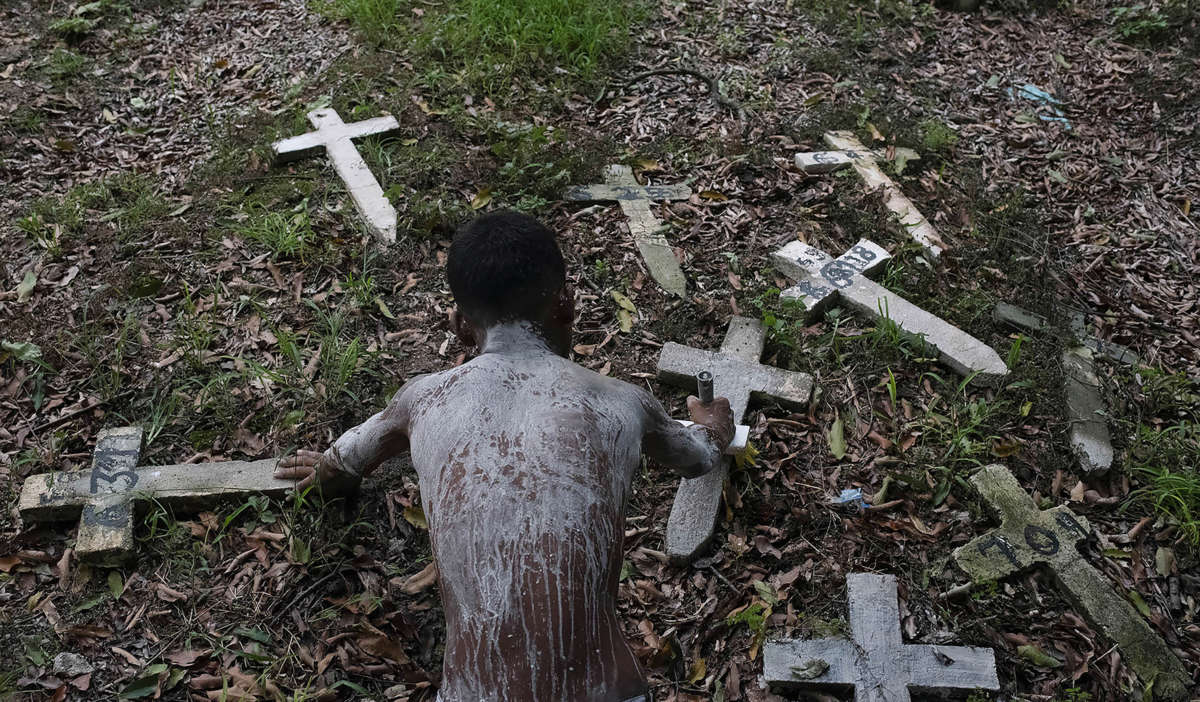
The interred Baron Antônio Pereira Passos, an enslaver coffee grower, witnessed a slow but steady movement toward the abolition of slavery, a system he was heavily dependent on for building his wealth. The baron’s son, Francisco Franco Pereira Passos, went on to become mayor of Rio de Janeiro in 1902. His main accomplishment was a massive urban planning endeavor to smooth this “work-force” transition into the industrial era. Inspired by a rapidly industrializing Paris and the interests of the coffee industry, he demolished homes and built roads to accommodate the increasing European immigrant population. But by doing that, Francisco Passos essentially displaced countless freed families and laid the groundwork for what we today call favelas.
The “freeing” of enslaved people was a scrupulous process concocted by powerful white men for at least half a century. Although abolition became official in Brazil in 1888, Black families were used as pawns in negotiations between Western countries and American colonies soon after these colonies proclaimed themselves “free” and independent. This independence threatened the former colonizers, who were losing access to cheap colonial labor and didn’t want to have to compete with the less expensive prices of merchandise coming from Brazil.
Also buried in the Caju Cemetery is José Maria da Silva Paranhos, the viscount known for negotiating a slow plan for abolition, in order to satisfy the British without threatening the Brazilian monarchy’s grasp on power, which was in the interest of neither of them. This plan was the “Law of Free Birth,” which gave enslavers “the choice to either deliver children, born after 1871, whose mothers were slaves to the state or keep them in their power and educate them.” Certainly, the law was not as humane as it sounds. As a legal loophole, it did nothing more than guarantee that elites didn’t lose wealth or power as the system transitioned from a colonialist system fueled by chattel slavery to a capitalist one fueled by industrial workers. This brings us to the next wave of problematic monuments — the fascists.
20th Century Dictatorships and Nameless Graves
With industrial capitalism came the anti-capitalist resistance, which marked most of the 20th century. Brazil found itself with one iconic anti-communist dictatorship for each half of that century. While some of those who resisted simply disappeared, others got mausoleums. In the Caju Cemetery, there is a Mausoleum of Integralistas, where the remains of members of a fascist movement inspired by Italy’s Benito Mussolini can be found. Their opposition to the first dictatorship of that century certainly put Brazil between a rock and a hard place — a nationalist dictatorship opposed by a failed fascist uprising.
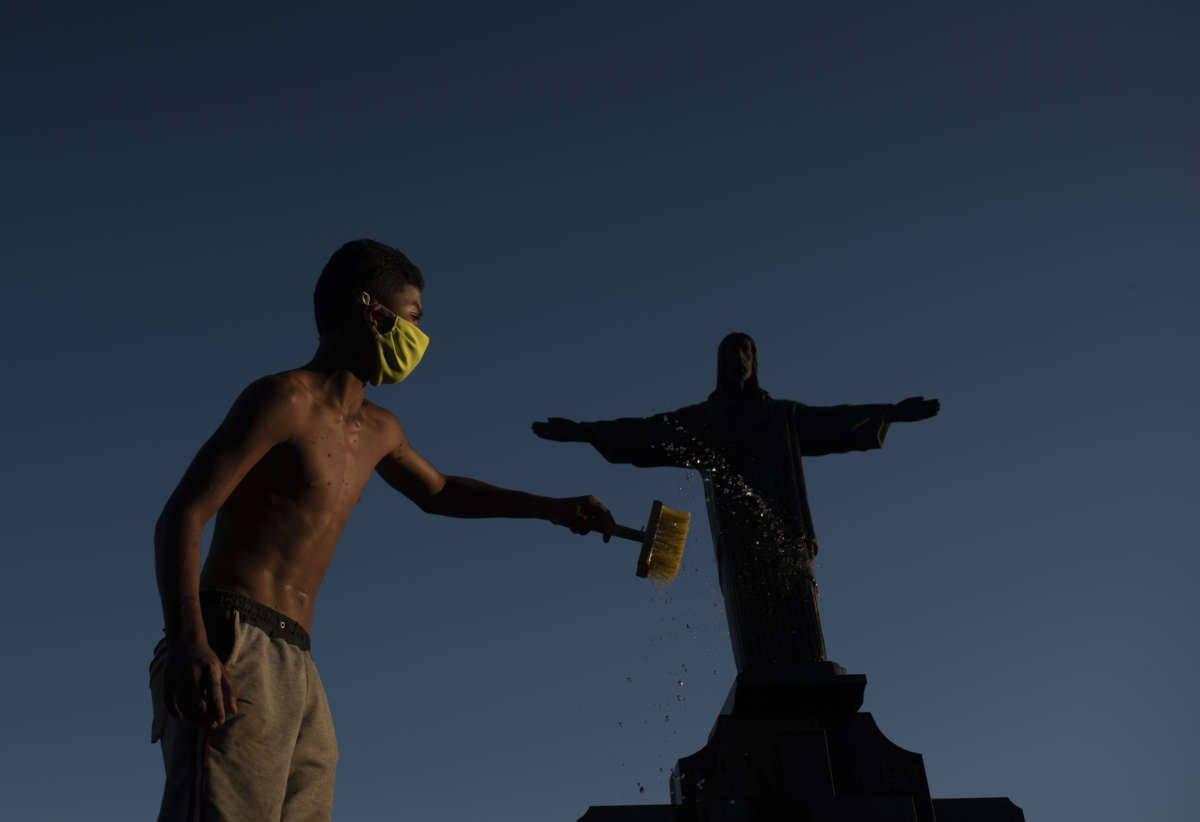
Meanwhile, the disappearance of several anarchists responsible for the General Strike of 1917 remained unsolved until more than 70 years later, with the discovery of a clandestine mass grave in a São Paulo cemetery. The Perus Cemetery was founded during Brazil’s second dictatorship of the 20th century (in the 1970s) and was known for burying the poor, unidentified and homeless. Dozens of unnamed bodies were buried there daily. Today, the cemetery has a graffiti monument to honor the dead and missing militants. Many of the bodies that were found there are still unidentified, and it’s painfully clear that impunity is largely due to the blatant lack of respect for the bodies of poor people — which made it possible for dead militants to remain missing for this long. This lack of respect for Black, poor or homeless bodies is consistent throughout the centuries. It continuously robs people of their history, and of their place in the collective psyche. It would be naive to think this condition has not been carried with us into the 21st century.
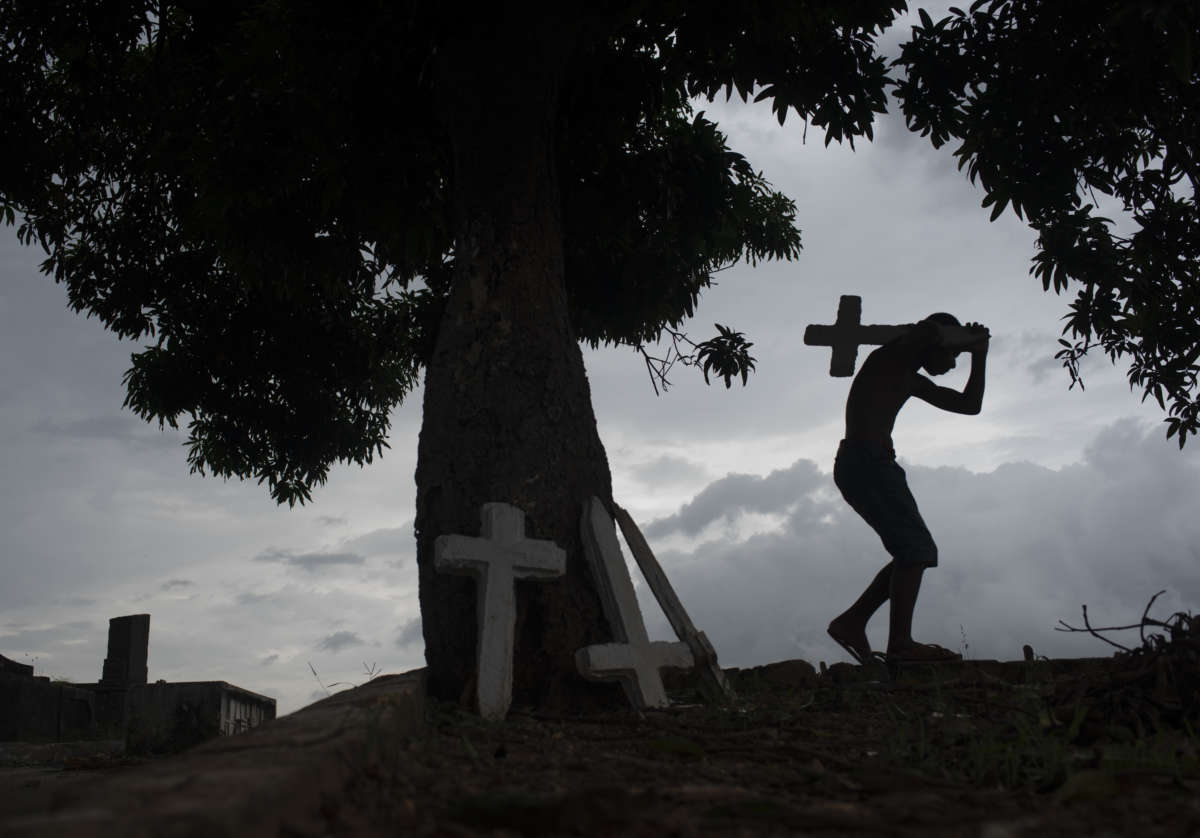
For nearly 150 years, the Caju Cemetery was run by Santa Casa de Misericórdia (Holy House of Mercy), a 15th-century Portuguese charity organization. In 2015, it changed hands after a highly televised corruption scandal involving tax evasion, illicit real estate transactions, irregular constructions and labor rights infringements. The new administration, Concessionária Reviver (Revive Concessionaire), has not shown much improvement, since it’s involved in nearly 300 lawsuits, including a class action over improper charging of maintenance fees. While cemetery administrators collected these maintenance fees, a child worked maintenance for tips.
Throughout the last four months, Brazilian photographer Fabio Teixeira followed the work of a 14-year-old boy, Josué Vicente Pereira (nicknamed “Fumaça”), at the Caju Cemetery. The resulting photographic essay, called Entre a Cruz e a Infância (Between the Cross and the Youth), shows the child cleaning the graves, painting crosses and exchanging flowers. He has done this work since he was 7 years old in exchange for tips from visiting families. During the coronavirus pandemic, his income (which his younger siblings also depend on) dropped significantly, but he continues to work even with a tremendous risk of COVID-19 infection.
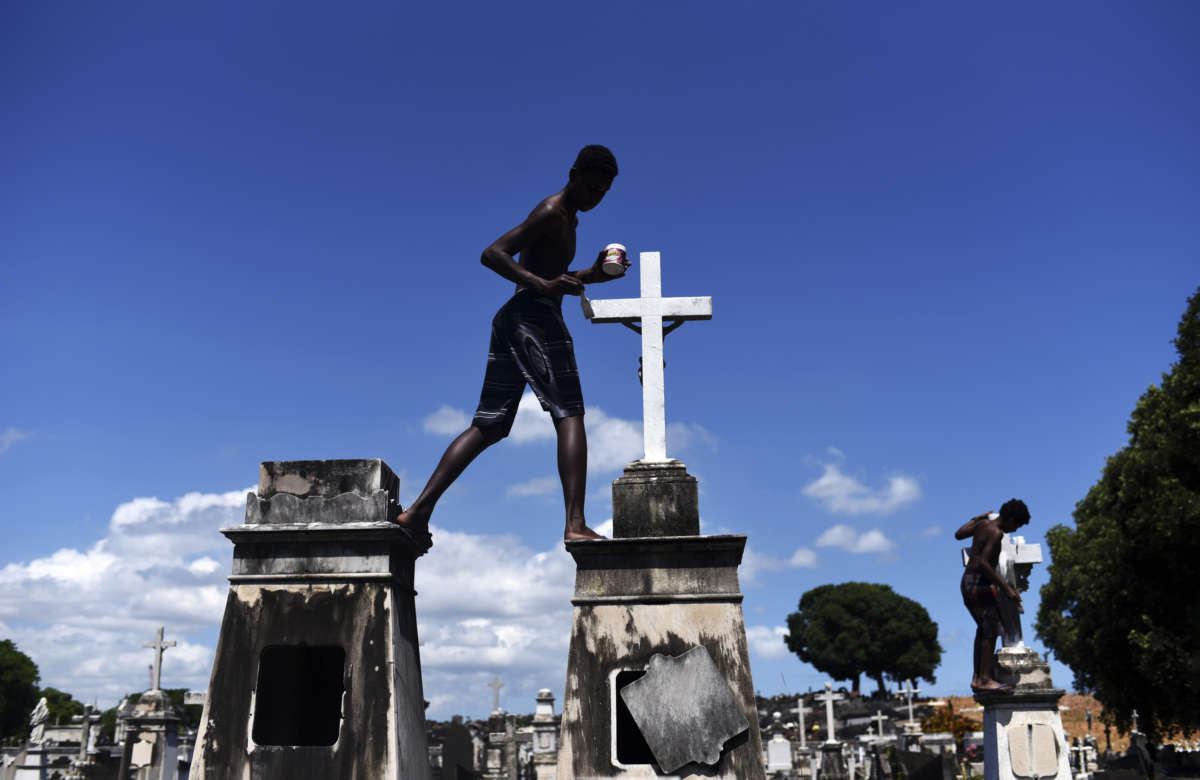
“I’m afraid of the coronavirus, but I can’t stop working here,” Fumaça said. “My mother lost her baby two months ago; we receive the state’s family allowance, but I have two younger siblings, and my mother is sick with depression. My stepfather could not get government assistance, he was denied, so I need to work.”
This type of corruption and exploitation is a modern-day expression of the racial oppression that remains throughout time — low-wage labor for the profit of land-owners. A century and a half after the passing of the “Law of Free Birth,” poor Black children are still not born free. They cannot be born free when the wealth their family produced has been hoarded by other families for centuries, and they are still forced to work under deplorable conditions to survive. A nameless body that is tossed in a mass grave, robbed of its history, cannot be free either. When the names and bodies of free people are forged into matter that resists the test of time — and it’s called history — it makes sense that those who don’t see themselves in this history feel compelled to show that it’s time to resist.
Paradoxically, it has been commonplace in history to erase the history of a people. The monuments of “great statesmen” can attempt to erase the history of not only the U.S., but of all the African diaspora. As the longest-running enslavist regime in Latin America, Brazil went through its own version of the Civil War. Brazilian nationalists defended slavery as if it symbolized political sovereignty from Western European states, the same way U.S. Southerners proclaimed states’ rights. Our rejection of these distorted narratives of history rooted in white supremacy is long overdue.
Join us in defending the truth before it’s too late
The future of independent journalism is uncertain, and the consequences of losing it are too grave to ignore. To ensure Truthout remains safe, strong, and free, we need to raise $34,000 in the next 72 hours. Every dollar raised goes directly toward the costs of producing news you can trust.
Please give what you can — because by supporting us with a tax-deductible donation, you’re not just preserving a source of news, you’re helping to safeguard what’s left of our democracy.
